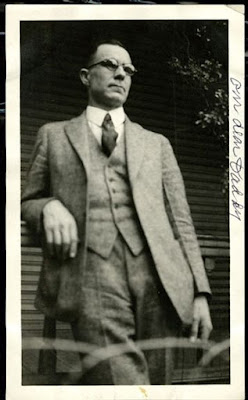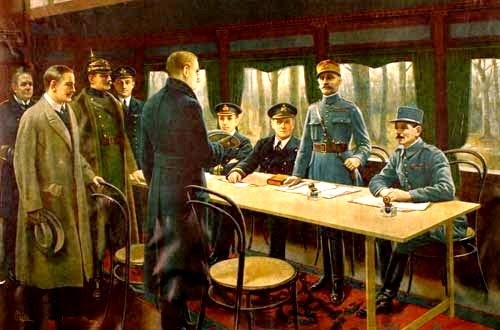Polywog is a 17-foot,
swing-keel trailerable daysailer with a little cuddy and bunks which puts it
into the class of small sailboats called “Pocket Cruisers”. Which means something like boats
capable of poking around coastal waters and nipping into cozy coves for the
night. She arrived in our driveway within about 24 hours of a brain explosion
in early August on the order of, "Goddamit, I'm turning 75 and if I'm
going to realize the dream of a real sailboat, so if not now when, ask me -
huh?!! And anyhow, it's my birthday, so ..." I was very fortunate in
that a Holder 17 was among the two or three boats on Craigs List as I
feverishly perused it one night in bed with the laptop. it turns out they are well-made
and well-respected boats, with a good online following.
When I went to see it
the next day I was surprised at how roomy and comfortable-looking the cockpit
was. The boat was in immaculate condition - not a project boat as most that old
(built by Hobie in the early 1980's) could most likely be. The owner had purchased
her earlier this year with the idea of teaching himself to sail and then going
around the world. But he'd recently inherited two other boats, and storage was
becoming an issue, thus the Craigs List ad. But in the short time he had her he
had polished the decades of oxidation from the nearly immaculate hull, bought a
new 6-horse outboard (4-cylcle, reverse gear, and capable of charging an
on-board batttery), and made other improvements. I knew she was perfect. I
handed him 25 hundred dollar bills and pulled her home that day. She became
"Polywog" based on her short and fat build, and as a remembrance of
the fun my wife, Hilda, and I have had this spring and summer raising a bevy of polywogs
in our fountain.
The first sailing of "Polywog" was a complete success, despite some previous misgivings. Although I had
raised the mast and fully rigged the boat once on the driveway, I had concerns
about whether I would have the strength and energy to get it rigged and carry
out all the other launching chores, and still have something left to enjoy the sail.
Mostly I was hopeful
that my wiffe would enjoy the day. To say she was less than fully "on
board" with my sudden purchase would be an undersatement. Although I had
involved her with things done over the last weeks to improve the boat, and she
had shown moments of positive interest, there was an explosion last week on the order of,
"You are spending all your time on that boat and taking time away from
help I need with things I want to do". So i was kinda sweating out how the
day would go, and determined to stay calm, happy, and uncranky as I sorted out
the rigging and launching.
We'd planned to leave
11-ish for Lake Englebright, a reservoir built to capture
sediment back in the hydraulic gold mining days, now managed by the Corps of
Engineers as a recreation lake, and kept brim full year round. We were
fortunate with the weather, which has been cooling from the near 100's to the
mere mid- to upper-80's. This helped to drop the anxiety meter one notch.
Despite long to-do lists
fully checked off, our outings always require time-consuming chores at
the last minute, chores which often could have been done earlier, but somehow not
thought of until the final throes of preparation. This time it was gassing up
the truck, getting some deli sandwiches, icing the ice chest, and hooking up.
We left about noon.
 |
| You can click on this and the other images to bigify them. |
It's about an hour and
a half to Lake Englebright, on the map about 7 miles NW of Grass Valley.
Despite its nearness, somehow we had never explored it, and the turn to the
launch ramp, after a long twisty road, came suddenly. Rigging took nearly two
hours in the hot afternoon sun, and I was beginning to wonder if it was worth
it. And Hilda had apparently disappeared into the truck after at first seeming
interested in helping. Uh-oh - I assumed she was sitting there fuming. But it
turned out she had spent a long time chasing down a handful of pills which had
left her little pillbox, and were making there colorful way rolling and
bouncing happily down the ramp toward the lake. Once they were corralled she
had to chase down our day-use ticket which had blown from the dashboard in the
gusty winds and of course ending up beneath the truck.
Finally we backed her
into the water, Hilda following along the pier clinging to a mooring line. We were
both excited to see Polywog afloat after her interminable stay on the driveway
while we had waited on a window in the calendar between doctor, dentist,
personal maintenance, and work issues. Hilda parked the trailer, hit the
restroom, and made her way down some steep steps and the ramp while I arranged
the boat on the dock for our getaway. There was a moment of panic as I worked
her around the dock to a better position when the winds caught her, I made a
grab for the deck, and feeling the force of the wind and momentum thought for a
moment that I would be stretched further and further between boat and dock,
leading to an inevitable dunking.

But all went well,
Hilda stepped easily aboard, and we were soon motoring out of the marina past a
shanty town of a variety of houseboats. With the wind behind us we shut down
the motor, raised the main, and soon the joy of the boat began to come over us.
Sitting on the comfy bench cushions we poured iced tea and snacked while we
slipped past a foothill shoreline of lovely oaks and gray pines. The long,
narrow lake has about 200 boat-in only campsites along the shore and tucked
away in little coves. At some point we worked out the timing, and realized that
if we turned around then we wouldn't be home until 8 pm. And then we kept
going, grinning the while. Finally the cliffs closed in and we set the jib, headed back to the marina, and began to learn how to work Polywog to windward. The motor was
a huge drag, nearly stalling us on comeabouts, and it took me awhile to figure out how to raise is to catch the notch which would hold it out of the water. Finally It
caught, and we sailed on, delaying starting the motor despite the dying breeze,
both enjoying the peace of quietly slipping through the water as the sun
slipped behind the hills.
 |
| Time for some iced tea and snacks |
Finally the wind died
completely and we slowly motored into the marina, drifting up to the pier for a
perfect landing, cranked up the keel (some 200 turns on the windlass), got the
boat onto the trailer on the second try (the keel needs to slip into a narrow
"U" channel). Happy and relaxed, we spent an hour unrigging, watching
deer, and noticing the brilliant stars and the milky way. Thank goodness for
the launch area lights. We were home and in bed about midnight, happily
chatting about the fun day. Now we are looking forward to other outings, Tahoe
most likely, and even perhaps the Bay once we learn and get used to Polywogs
wiles. And mostly looking forward to sharing her roomy cockpit with kids and
grandkids.
 |
| On the relaxing downwind leg |
'
 |
| Hilda searches for the best jib setting as we learn to work Polywog to windward |
.














































.jpg)








